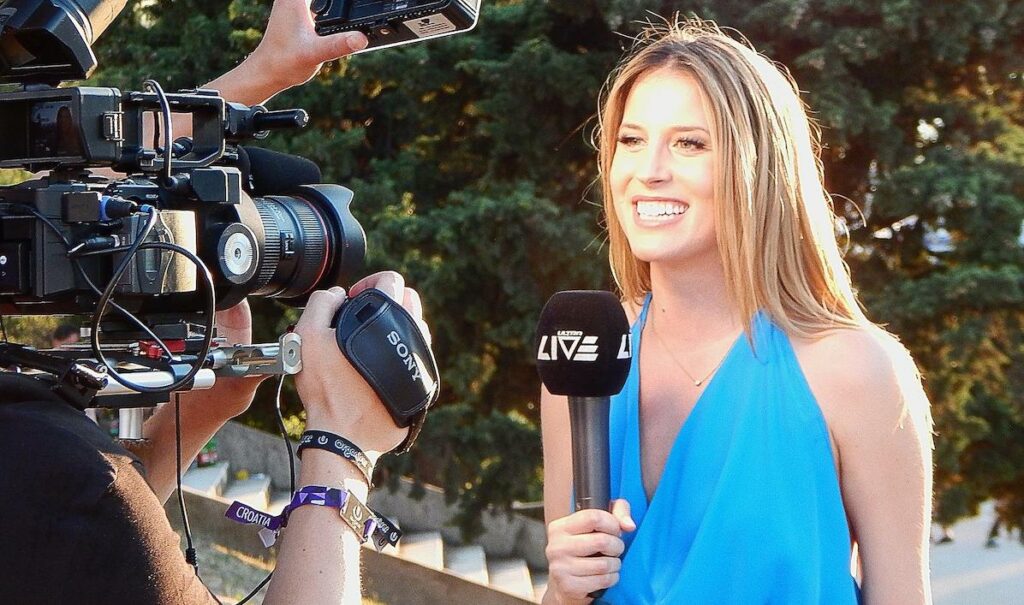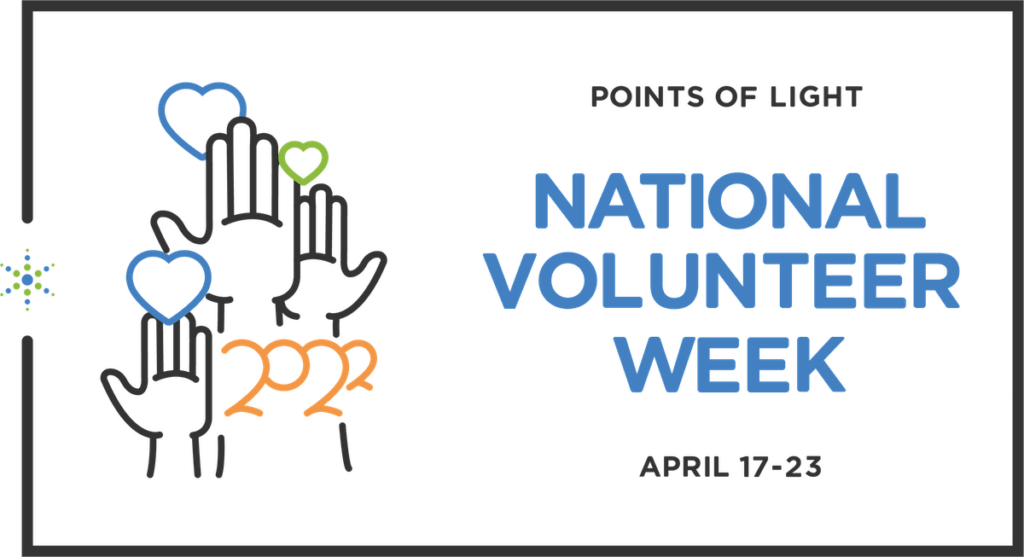 How to Get Media Coverage During National Volunteer Week 2022: Part 2
How to Get Media Coverage During National Volunteer Week 2022: Part 2
National Volunteer Week 2022 is here (April 17-24, in the US)! This week is the perfect time to attract media attention to your volunteers and to leverage the media to make the public aware of your opportunities, share your volunteer appeals, and inspire your community to step up and serve.
Reporters are actively seeking sources for stories right now. So, in Part 2 of this two-part blog series, we’re sharing our favorite tips and advice to help you get press coverage.
Missed our first post? Access How to Get Media Coverage During National Volunteer Week: Part 1 HERE >>
In this week’s post, we focus specifically on how to pitch and get coverage for your National Volunteer Week, Global Volunteer Month, or other special events and celebrations.
We hope you find these tips helpful not only now, but throughout the year, when you need to amplify messages about your volunteer accomplishments and needs.
Twelve Tips for Getting Your National Volunteer Week 2022 Event Covered by the Media
In the event you haven’t been able to build relationships with reporters ahead of time, you still have a chance to get covered by reporters during National Volunteer Week.
Below are some tips on how to actively encourage press coverage:
Get Them Info in the Right Format – If a reporter wants an email, don’t send a text. Also, community calendars and public affairs programs have very specific guidelines on how they want their information and Public Service Announcements (PSAs). Be sure to comply with them or you risk wasting your time and theirs.
Get Listed in the Daybook – The Daybook is a list of media events that are distributed by a news service to their affiliates each day. Pitch your event to the daybook editor and send a news release to the local Associated Press bureau and others, such as Reuters and United Press International (UPI).
Make Your Event Accessible – Host your event in a central location on a weekday, when most camera crews and reporters are working. Include a press conference as part of your event, if it won’t be too disruptive. Schedule it either between 10am and 1pm when reporters are available, or during early evening TV news shows, so that they can attend and film you live in action.
Be a Resource – Be accessible by phone and email, answer questions clearly, and give suggestions on other sources of information before, during, and after your event. Be sensitive to the reporter’s deadlines and get back to them within that timeframe.
Give them Good Sound Bites – Answer questions succinctly. Provide your info in short quotable sentences in plain English. Avoid using jargon or acronyms. Wear clothes that are camera ready, for photos or video.
Give them Photos and B-Roll – Provide reporters with images both before and after your events and send different ones to different news sources. Caption your photos with the names of the people pictured and make sure they agree to be used in images. B-roll is a compilation of video footage of your program in action. TV stations will often run with the anchor’s voiceover explaining what’s going on.
Make Your Event Visual – Make sure there are images that identify your organization in the shots, such as a banner or logo that you place behind you.
Don’t Ask for Something to Be Off the Record – If it’s off the record, you shouldn’t be taking about it. The same goes for using “no comment.” It makes you sound like you are hiding something and doesn’t engender trust.
Write a Letter to the Editor – Keep it short, 150-200 words, and be sure to clear your point of view with the powers that be at your organization. Remember that your organization should communicate an unbiased message, so a biased Op-ed (Opinion Editorial) won’t do (unless you are an advocacy-based organization). Mention your event, or National Volunteer Week, and why volunteerism helps solve the problem you are writing about.
Pitch Topic-based Stories that Tie into Your Event or National Volunteer Week – Develop stories such as these: volunteer feature story, recruitment pitch, announcement of a new grant, special event, or volunteer award or anniversary. Make the event a background to the main story line.
Keep a List of “Validators” and Spokespeople – Maintain a list of people who will speak enthusiastically about your organization or program to reporters at events. Community leaders and people outside your program are the most powerful, as well as your volunteers. Steer away from anyone who is too political or polarizing. Remember, your organization should communicate an apolitical point of view (unless it is an advocacy organization).
Send a Thank You Note – Send a handwritten note to reporters who cover your events and stories. Compliment them on how they covered your news and how it helps grow community support for your cause.
The more helpful you can be in supplying information and media, the more likely you will get coverage. In fact, for smaller media outlets and community newspapers, it’s not uncommon to have a well-written news release be printed verbatim!
Remember, the reporter has a job to do on a deadline. And they have an editor they must answer to. Make them look good by giving them everything they need to shine.
When Do You Make a Pitch for Your National Volunteer Week 2022 Event?
When getting a reporter to cover your National Volunteer Week 2022 and other events, timing is everything.
You don’t want to contact them too soon or the story won’t be relevant to them. If you contact them too late, they won’t have time to announce it.
Below are some good guidelines to follow:
- One to Two Months Before Event – Call media outlets to find out lead times for programs and sections. Distribute your news releases and pitches according to this schedule. If you’ve already developed relationships with reporters, you will already know this information.
- One Week Before Event – Send out news releases (and any other visuals) and follow up with pitches.
- Day Before Event – Send out news advisory (a shorter version of your news release) and make any follow up calls.
- Morning of Event – Call to see who is attending and check on any special needs they may have. Make sure you have a media sign in sheet at the event, so you can follow up with reporters who attended.
- Day After Event – Send out a follow up news release (and images). Follow up with any reporter who attended to see if they need anything else (i.e., quotes, photos, etc.).
When cultivating press coverage for your special events and National volunteer Week 2022 activities, don’t be disappointed, or take it personally, if a reporter doesn’t show up or you don’t get the coverage you thought you would.
The news cycle is fickle and editorial decisions about what gets printed or shared can change on a dime. If another, more newsworthy, event happens, you may lose coverage. But you haven’t lost the connection with the journalist. Follow up and thank them for considering you and offer yourself again as a future resource.
Don’t fret and resolve to try another day!
FREE Tool: Volunteer Thank You Letter Sample Cheat Sheet
Volunteer appreciation doesn’t have to be difficult. And, often the simplest ideas are the most heartfelt and appreciated.
If you’re looking for quick ideas on how to write creative, meaningful thank you notes, check out our free Volunteer Thank You Letter Sample Cheat Sheet!
Use this guide to write notes of appreciation for volunteers. Don’t wait until the end of a big project or event. You can also send thank you notes to spouses, partners, bosses, and kids for supporting the volunteer in their community work!
The Cheat Sheet includes a list of research-based motivations you might want to reinforce in your letters. Also, we share our Four-Part Power Volunteer Thank you formula and offer an example of how to use it in a thank you letter.
If you struggle to know just what to express in your letters or are looking for a little extra inspiration, this freebie is for you!









